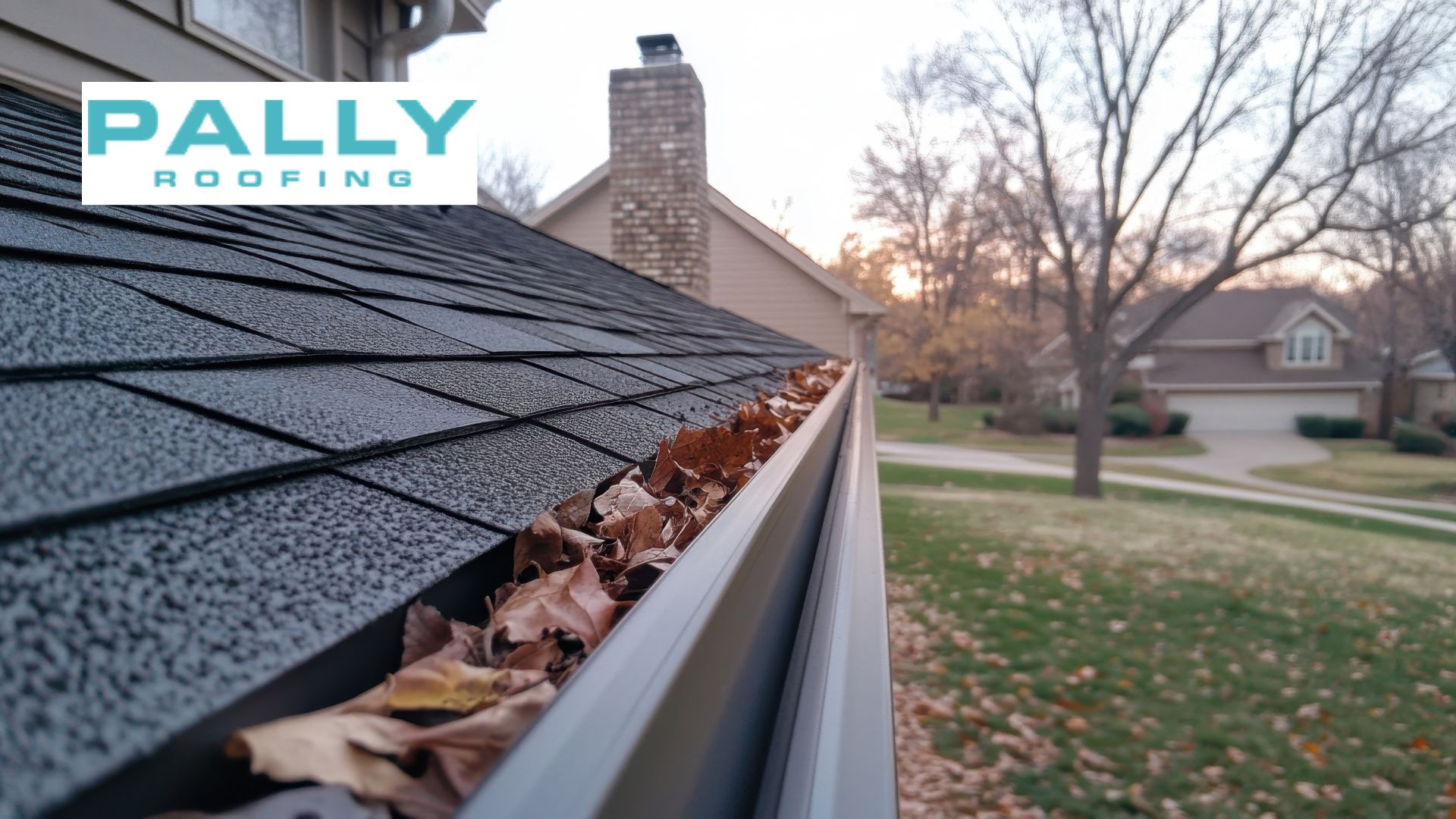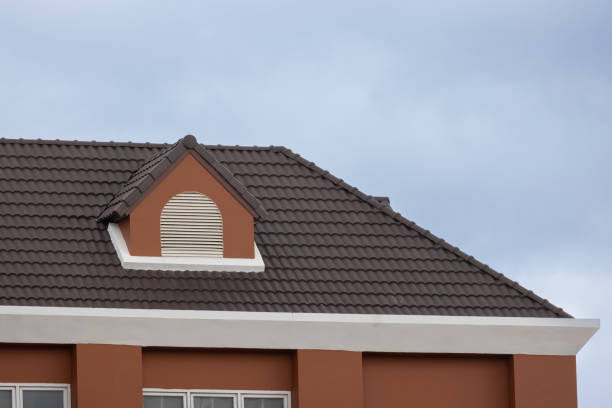Last updated on August 28th, 2024 at 09:28 am
Living in a region with heavy rainfall demands a roof that can handle the elements. While traditional asphalt shingles may struggle, metal roofing emerges as a champion, offering superior durability and weather resistance. This blog delves into the world of metal roofing for heavy rain areas, exploring its benefits, types, installation considerations, maintenance practices, and long-term value.
Table of Contents
Throughout this blog post, we’ll discuss the advantages of metal roofing for heavy rain areas and provide valuable information to help you make informed decisions. But remember, every home is unique, and professional expertise is crucial for achieving a successful roofing project.
Here’s where Pally Roofing comes in:
Considering Metal Roofing Installation
As you explore the various types of metal roofing and their suitability for your home, Pally Roofing’s experienced team can offer invaluable guidance. They’ll help you:
- Assess your roof’s current condition and suitability for metal roofing.
- Discuss different metal roofing options based on your budget, aesthetics, and specific needs.
- Provide detailed information about the installation process and address any concerns you may have.
Schedule a free consultation with Pally Roofing today and take the first step towards a weatherproofed future for your home.
Why Choose Metal Roofing for Heavy Rain?
Metal roofing offers several advantages over other materials, especially in areas prone to heavy downpours:
- Durability: Metal roofs boast a lifespan of 40-70 years, outlasting asphalt shingles significantly. They resist cracking, warping, and wind damage, keeping your home safe and secure for decades.
- Weather resistance: The tight seams and smooth surface of metal roofs shed water efficiently, preventing leaks and water pooling. They also stand strong against hail, snow, and extreme temperatures.
- Low maintenance: Unlike shingles that require regular repairs and replacements, metal roofs require minimal maintenance, saving you time and money in the long run.
- Sustainability: Metal roofs are made from recycled materials and are recyclable themselves, making them an eco-friendly choice.
- Energy efficiency: Metal roofs reflect sunlight, reducing heat absorption and lowering your cooling costs.
Types of Metal Roofing Materials: Navigating the Options
When choosing a metal roof, you’ll encounter several material options, each with unique characteristics:
Choosing the right material depends on your budget, desired aesthetics, and roof pitch. Consult a professional roofing contractor to determine the best fit for your needs.
Installation Considerations for Heavy Rain Areas: Ensuring Optimal Performance
Proper installation is crucial for maximizing the performance and longevity of your metal roof in heavy rain. Here are key considerations:
- Roof pitch: Ensure your roof pitch is sufficient to shed water effectively, typically a minimum of 2:12.
- Underlayment: Use a high-quality underlayment specifically designed for metal roofs to provide additional protection against moisture and leaks.
- Flashing details: Pay close attention to flashing around chimneys, valleys, and other roof penetrations to prevent water infiltration.
- Ice and water shield: Install an ice and water shield in vulnerable areas to prevent ice dams and water damage.
- Ventilation: Proper ventilation is essential to prevent moisture buildup under the metal roof, especially in cold climates.
Installing metal roofing requires expertise to ensure optimal performance and longevity, especially in heavy rain areas. Pally Roofing’s certified and insured professionals possess the knowledge and experience to handle every aspect of your metal roof installation, including:
- Ensuring proper roof pitch and underlayment for efficient water drainage.
- Providing meticulous flashing details around chimneys, valleys, and other roof penetrations to prevent leaks.
- Installing ice and water shield in vulnerable areas to prevent ice dam formation and water damage.
- Adhering to all local building codes and regulations for metal roofing installations.
Trust Pally Roofing to transform your roof into a reliable shield against the elements.
Maintaining Your Metal Roof for a Long Life: Simple Steps for Lasting Value
Metal roofs require minimal maintenance, but some simple practices can extend their lifespan and performance:
- Regular cleaning: Remove debris like leaves and branches that can trap moisture.
- Snow removal: Carefully remove snow to avoid damaging the roof.
- Inspections: Schedule annual inspections by a qualified professional to identify and address any potential issues early on.
By following these practices, your metal roof will continue to perform flawlessly for decades.
Cost vs. Value: Is Metal Roofing Worth the Investment?
While the initial cost of metal roofing may be higher than other materials, its long lifespan, low maintenance requirements, and energy efficiency translate to significant savings over time. Here’s a table comparing metal and asphalt shingle roofs:
When considering the total cost of ownership, metal roofing often proves more cost-effective in the long run, especially in areas with heavy rainfall. The reduced risk of leaks, repairs, and replacements, combined with energy savings and increased resale value, can outweigh the initial investment.
Additional Factors to Consider:
- Local building codes: Check with your local building department for any restrictions or specific requirements for metal roofs.
- Aesthetics: Metal roofs come in various styles and colors to complement your home’s architecture. Choose an option that aligns with your taste and enhances your curb appeal.
- Warranty: Opt for a metal roof with a strong warranty from a reputable manufacturer to ensure peace of mind.
Conclusion
Metal roofing offers a compelling solution for homeowners in heavy rain areas. Its exceptional durability, weather resistance, low maintenance requirements, and long lifespan make it a wise investment that protects your home and saves you money in the long run. By understanding the different types of metal roofing materials, installation considerations, and maintenance practices, you can make an informed decision and enjoy the peace of mind and beauty of a metal roof for decades to come.
Remember, consulting with a qualified and experienced metal roof installer is crucial to ensure a successful project and reap the full benefits of this exceptional roofing material.
Additional Resources:
- Metal Roofing Alliance: https://www.metalroofing.com/
- National Roofing Contractors Association: https://www.nrca.net/
- Architectural Roofing Association: https://slateroofers.org/about-us.htm
This blog post comprehensively overviews metal roofing for heavy rain areas. If you have any questions or need further assistance, please contact a professional roofing contractor like Pally Roofing for all your roofing needs.
For a comprehensive exploration of roofing options for heavy rainfall areas, head over to our insightful blog post:
Best Roofing Options for Heavy Rainfalls: Protecting Your Home in Any Downpour
Happy Roofing!
Author
-

With more than 16 years of hands-on experience, Phillip Schmucker is the knowledgeable owner of Pally Roofing. His dedication to superior roofing services has earned him a reputable place in the industry. Phillip also shares his extensive expertise through writing, providing readers with practical tips and professional advice on various roofing topics. Follow him on LinkedIn.
View all posts






